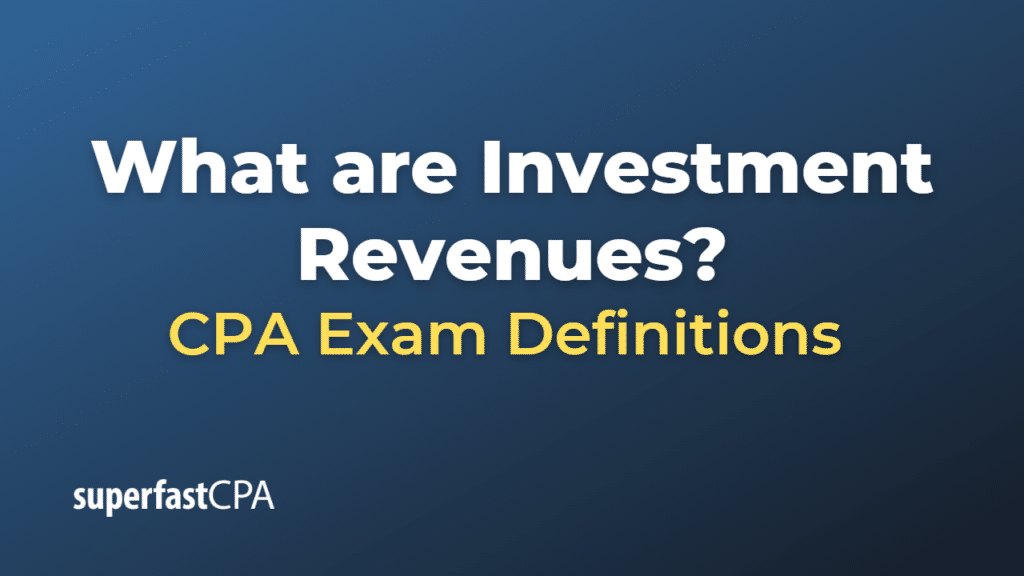Investment Revenues
Investment revenues, also known as investment income, represent the returns that an individual or business earns from their investments. These investments could be in the form of stocks, bonds, mutual funds, real estate, or other types of assets.
There are several different types of investment revenues, including:
- Dividends: These are payments made by corporations to their shareholders, typically from earnings. If you own stock in a company that pays dividends, those payments would be part of your investment income.
- Interest: This is the income earned from lending money, such as the interest earned on a savings account, a certificate of deposit (CD), or bonds.
- Capital gains: This is the income earned when you sell an investment for more than you paid for it. For example, if you buy a stock for $10 and later sell it for $15, you have a capital gain of $5.
- Rental income: If you own and rent out real estate, the payments you receive from tenants would be considered rental income.
These types of income are typically subject to different tax rules than ordinary income (like wages from a job), so managing investment income and understanding its tax implications is an important part of personal finance and investment planning.
Example of Investment Revenues
Let’s consider an example using an individual investor named Sarah.
Sarah has a diverse investment portfolio that includes stocks, bonds, and real estate. Here’s how she might earn investment revenues:
- Dividends: Sarah owns shares in a technology company that pays annual dividends. For simplicity, let’s say she owns 100 shares, and the company announces a dividend of $2 per share. She would receive $200 ($2 * 100 shares) in dividend income.
- Interest: Sarah also owns corporate bonds that pay a 5% annual interest rate. If she has $10,000 in these bonds, she would receive $500 ($10,000 * 0.05) in interest income for the year.
- Capital gains: Sarah decides to sell some of her stock in another company. She initially purchased the stock for $1,000 and sells it for $1,500. This results in a capital gain of $500 ($1,500 – $1,000).
- Rental income: Sarah owns a small rental property that she leases for $1,000 per month. Over the course of a year, she earns $12,000 ($1,000 * 12 months) in rental income.
Adding these up, Sarah’s total investment revenue for the year would be $13,200 ($200 in dividends + $500 in interest + $500 from capital gains + $12,000 from rental income). This is a simplified example and doesn’t take into account taxes, investment expenses, or potential losses, but it gives an idea of how an investor can earn income from different types of investments.













